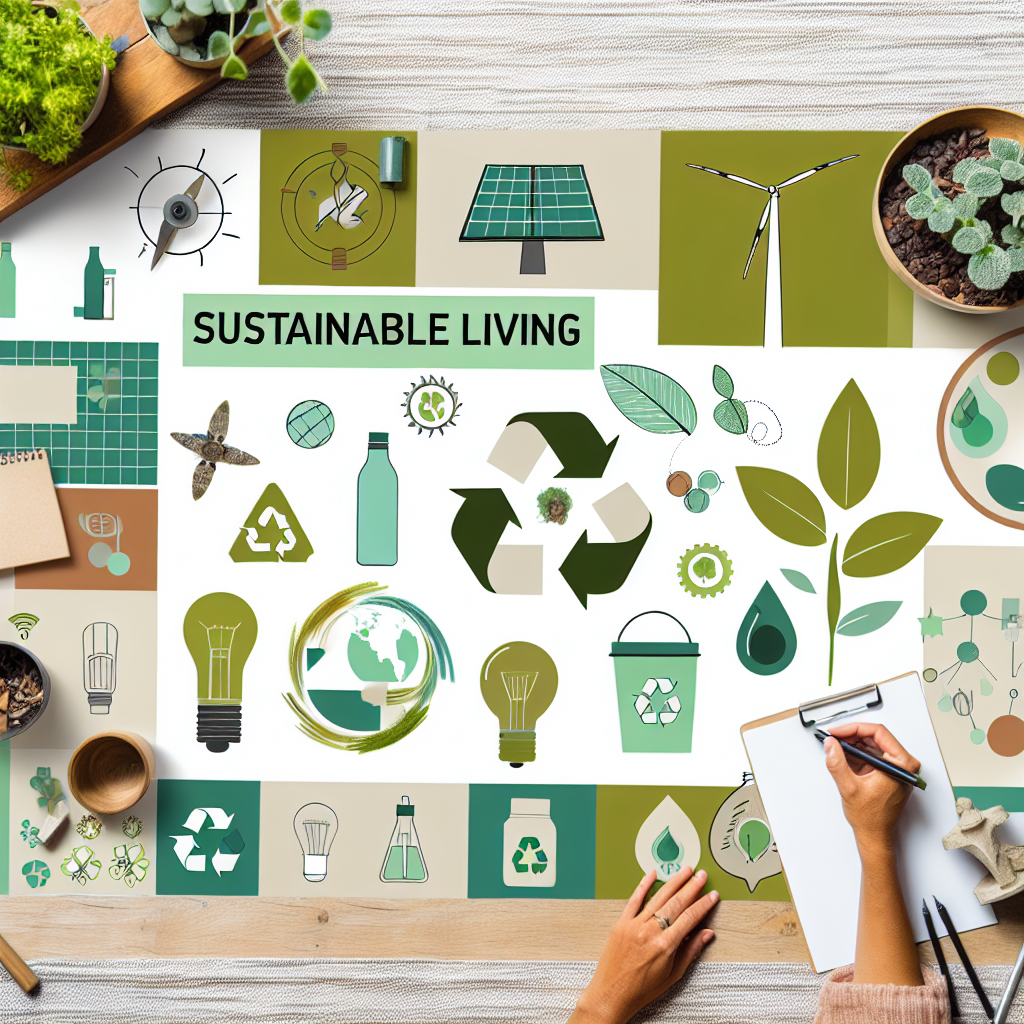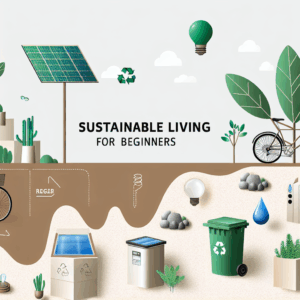Introduction
In a world where environmental concerns are at the forefront of global discussions, sustainable living has become more than just a trend – it’s a necessity. Making small changes in our daily habits can have a significant impact on the planet. Whether you’re new to the concept of sustainability or looking to deepen your commitment, this guide will provide you with practical tips to kickstart your journey towards a more eco-friendly lifestyle.

Main Section 1 – Reducing Waste
Reducing waste is a fundamental aspect of sustainable living. By minimizing the amount of trash we produce, we can lessen our environmental footprint and conserve valuable resources.
Subsection 1.1: Say No to Single-Use Plastics
Single-use plastics are a major contributor to pollution. Start by replacing plastic bags with reusable totes, using a refillable water bottle, and opting for a reusable coffee cup to reduce plastic waste.
Subsection 1.2: Composting
Composting is a great way to divert organic waste from landfills and create nutrient-rich soil for gardening. Start a compost bin in your backyard or explore community composting options in your area.
Main Section 2 – Energy Efficiency
Reducing energy consumption not only helps the environment but can also save you money in the long run. Implementing energy-efficient practices in your home is a key step towards sustainable living.
Subsection 2.1: Energy-Efficient Appliances
Invest in Energy Star-rated appliances that consume less electricity. Additionally, unplug electronics when not in use, switch to LED light bulbs, and consider installing a programmable thermostat to regulate energy usage.
Subsection 2.2: Renewable Energy Sources
Consider switching to renewable energy sources like solar or wind power. Installing solar panels on your roof or opting for a green energy provider can significantly reduce your carbon footprint.
Main Section 3 – Sustainable Shopping
Making mindful choices as a consumer can have a positive impact on the environment. From supporting ethical brands to reducing packaging waste, there are several ways to embrace sustainable shopping habits.
Subsection 3.1: Buy Local and Seasonal Produce
Support local farmers and reduce carbon emissions associated with transportation by purchasing locally grown fruits and vegetables. Opt for seasonal produce to minimize the environmental impact of food production.
Subsection 3.2: Choose Eco-Friendly Products
Look for products that are made from sustainable materials, such as bamboo, organic cotton, or recycled materials. Avoid products with harmful chemicals and opt for eco-friendly alternatives.
Benefits/Advantages/Tips Section
Embracing sustainable living not only benefits the environment but also promotes a healthier lifestyle. By reducing waste, conserving energy, and making mindful consumer choices, you can contribute to a more sustainable future for generations to come.
Common Mistakes/Challenges Section
One common challenge beginners face when transitioning to a sustainable lifestyle is feeling overwhelmed by the changes. Remember that sustainability is a journey, and every small step counts. Start with manageable goals and gradually incorporate more eco-friendly practices into your routine.
Conclusion
In conclusion, sustainable living is not about perfection but progress. By making conscious choices in our daily lives, we can make a positive impact on the environment and create a more sustainable future for all. Start small, stay committed, and inspire others to join you on the journey towards a greener, more sustainable world.
AI-Assisted Content Disclaimer
This article was created with AI assistance and reviewed by a human for accuracy and clarity.


Leave a Reply